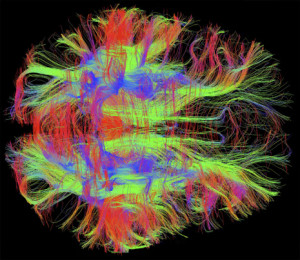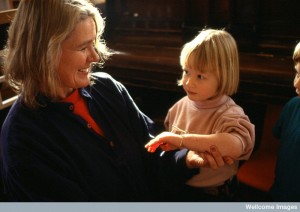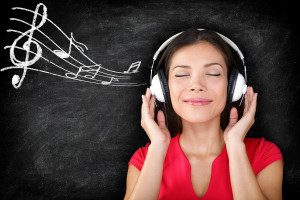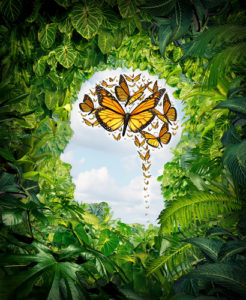 The brain regions for pleasure are difficult to pinpoint, partly, because of many different ways we can trigger enjoyment. Pleasure can result from tasty food, a movie, school and athletic accomplishments, drugs, and noble efforts to help the community, the country and the world. A previous post noted that research points to the fact that the later type of satisfaction in helping the community has the strongest positive effects on our immune system, but these pathways are not known. While it is by no means clear how the higher forms of satisfaction and pleasure are related to an ice cream cone, recent research using both humans and detailed invasive brain analysis of animals has discovered some important ways that the brain processes pleasure. Much of what was previously considered in brain science about liking and motivation has been overturned.
The brain regions for pleasure are difficult to pinpoint, partly, because of many different ways we can trigger enjoyment. Pleasure can result from tasty food, a movie, school and athletic accomplishments, drugs, and noble efforts to help the community, the country and the world. A previous post noted that research points to the fact that the later type of satisfaction in helping the community has the strongest positive effects on our immune system, but these pathways are not known. While it is by no means clear how the higher forms of satisfaction and pleasure are related to an ice cream cone, recent research using both humans and detailed invasive brain analysis of animals has discovered some important ways that the brain processes pleasure. Much of what was previously considered in brain science about liking and motivation has been overturned.
It appears that there are pathways for ordinary liking and pleasure, which are limited in scope. There are, also, many specific brain regions, called hot and cold spots that greatly increase or decrease pleasure or produce the opposite of pleasure—disgust and fear. In fact one region of the nucleus accumbens is structured like a keyboard with specific triggers in rows—producing an increase and decrease of pleasure and disgust. The cortex has unique roles in the cognitive evaluation of our feelings of pleasure. The interplay of these multiple triggers and the higher brain centers in the cortex are very complex and are just being discovered.
Desire and Reward Centers
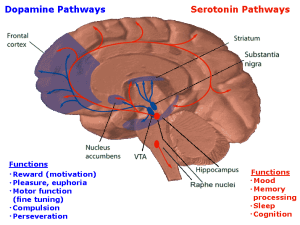 What is surprising is that many different sources of pleasure stimulate the same circuits between the mesocorticolimbic regions. Reward and desire are two aspects of this and havs a very widespread large circuit. Some part of this circuit distinguishes between desire and dread. Regions thought to be related to producing pleasure, in fact, may not at all. This includes well-known dopamine circuits in the mesolimbic system that do not appear to influence pleasure, but rather motivation.
What is surprising is that many different sources of pleasure stimulate the same circuits between the mesocorticolimbic regions. Reward and desire are two aspects of this and havs a very widespread large circuit. Some part of this circuit distinguishes between desire and dread. Regions thought to be related to producing pleasure, in fact, may not at all. This includes well-known dopamine circuits in the mesolimbic system that do not appear to influence pleasure, but rather motivation.
 The mesolimbic system is a dopamine circuit for reward. It starts in the ventral tegmentum (VT) of the midbrain and travels to the nucleus accumbens. It is highly related to all addictions. The VT has neurons using GABA, dopamine and glutamate. The nucleus accumbens (NAc) is in the ventral striatum and is divided into two sub regions—the limbic and motor are called the shell and core. The NAc has spiny neurons that receive dopamine from the VT and glutamate from the hippocampus, amygdala and medial pre frontal cortex. NAc then sends GABA messages to the ventral pallidum (VP). The VP is a relay in the limbic loop of the basal ganglia, critical for motivation, behavior and emotions. It is involved in drug addiction. In fact, it has been recently found that the VP has very significant hotspots described in detail later in this post.
The mesolimbic system is a dopamine circuit for reward. It starts in the ventral tegmentum (VT) of the midbrain and travels to the nucleus accumbens. It is highly related to all addictions. The VT has neurons using GABA, dopamine and glutamate. The nucleus accumbens (NAc) is in the ventral striatum and is divided into two sub regions—the limbic and motor are called the shell and core. The NAc has spiny neurons that receive dopamine from the VT and glutamate from the hippocampus, amygdala and medial pre frontal cortex. NAc then sends GABA messages to the ventral pallidum (VP). The VP is a relay in the limbic loop of the basal ganglia, critical for motivation, behavior and emotions. It is involved in drug addiction. In fact, it has been recently found that the VP has very significant hotspots described in detail later in this post.
Liking

Ordinary liking of something, or pure pleasure, is represented by small regions mainly in the limbic system. These can be part of larger circuits. In latin hedus is sweet and hodone is pleasure in greek. Hedonic now refers to many different aspects of pleasure, some purely sensory and some more complex emotions involving morals, aesthetics and social interactions. The capacity to have pleasure is part of being healthy. Psychiatric illness includes symptoms, which are a lack of the normal experience of pleasure, called anhedonia. A negative feeling state is called dysphoria, which can include many emotions such as pain, depression, anxiety, fear and disgust.
One complex question in the research of pleasure is whether it can include the study of subjective experiences as self-reported, or only behavioral manifestations of these. In the previous post on crows, it was clear that when comparing highly intelligent animals with humans, subjective experience cannot be used in the research. Since much of the research in detailed brain regions of pleasure are from invasive studies of animals, these cannot be compared with subjective states. However, from both animal and human research some notions of the difference between subjective reports and behavioral manifestations can be gleaned.
From this new research, there are significant new findings.
- There is a separation in the brain circuits of desire, learning, reward and liking
- There are some overlapping similar circuits for simple sensory pleasures and higher order social pleasures.
- While ordinary pleasure can occur with damage to many higher regions including the cortex, there are significant pre frontal cortex regions that deal with the results and cognitive evaluation of pleasure.
 Perhaps, the most dramatic findings are very specific hubs in different parts of the brain that magnify or decrease pleasure responses—or the opposite—fear, dread and disgust. In fact, these can rapidly switch.
Perhaps, the most dramatic findings are very specific hubs in different parts of the brain that magnify or decrease pleasure responses—or the opposite—fear, dread and disgust. In fact, these can rapidly switch. - The nucleus accumbens is much more complex than previously considered. It triggers liking, desire and rewards, but, also, fear and disgust. One of the major emotional trigger keyboards is in the NAc.
- There are multiple chemical switches in NAc that can rapidly change desire to fright
Intersection of Liking, Desiring and Learning
Reward is not simple but includes
- Liking something
- Desire triggering motivation
- Learning at many levels
These three have different intersecting mechanisms and can occur together or separately. Most often desire or wanting starts the others. Liking in some ways measures how much is necessary and when enough is enough. Learning exists at all times in all aspects of these processes. The research distinguishes “liking” as evidenced by animal behavior from subjective human liking. Objective “liking” can be studied in both humans and animals. It is not clear when in evolution subjective and objective pleasure developed in the brain. And it is not clear how many animals have subjective feelings of pleasure, although it appears to be present in a lot more than is currently accepted.
Objective liking is shown in babies’ choices for food, which elicit facial expressions of pleasure with relaxed muscles and licking of lips and disgust expressions. These same behaviors occur in apes and mice, with reactions in the brainstem, but controlled by higher centers with top down affects from forebrain and especially from the limbic system. During the development of an appetite for something there is a complex set of other reactions including consuming the food (for example) with all of the movements involved; these include patterns of lip smacking and licking and the basic physical decision to swallow.

Liking and wanting may be separated. With the experimental suppression of dopamine many of the licking movements decrease as if the sweetness itself is decreased. Also, sugar intake will decrease. In these studies dopamine is involved in the motivation to pursue the pleasure but not the actual hedonic pleasure that is experienced afterward.
Likewise, the behaviors of “liking” can occur without the subjective experience of pleasure. This additional subjective experience can involve other brain circuits. This can occur with minimal stimuli of the desired taste. Even if these are unconscious (without conscious pleasure), they can affect motivation behavior.
Most often liking and subjective pleasure occur together as well as the higher order cognitive task of rating this experience compared with others. These cognitive ratings can affect the subjective experience and make people question their pleasurable experiences therefore decreasing them. Some people can report quite different subjective experiences based on their previous experiences and thoughts about them compared with this current experience.
These examples demonstrate a difference between subjective reports of pleasure and their behaviors. In different situations one is more accurate than the other.
In the Brain
The subjective experiences of different pleasures are quite unique—music, food, drugs, family time, sex. But, the underlying brain mechanisms of reward are surprisingly similar. Even higher forms of happiness through community service might share some of these brain mechanisms. Well-known PFC regions, limbic regions below the cortex such as the nucleus accumbens, the ventral palladium and the amygdala are part of this general circuit. Some animal studies are able to distinguish subtle differences in pleasure circuits for food and drugs.
Cortex regions appear very involved in all of these different subjective experiences with cognitive monitoring, rating and predicting the pleasure. The many different brain regions are not clearly understood—whether they are cause or effect or whether they represent decision making or memory of the event.
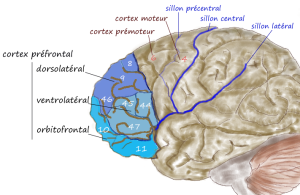
But, one region in the cortex—orbitofrontal cortex—is very correlated to pleasure even when many other variables are altered in research. An example is the feeling of enough of a sweet food, through many different dilutions with a gradual decrease of pleasure. Studies of these gradual changes in intensity are the best to track brain regions involved. This center is triggered in orgasm which is often stimulated by favorite music, addictive drugs and sweet foods. The left has stronger signals of positive emotions than the right.
The brain is not at rest, but is constantly switches between the different resting states (default mode network). This switching default network may be involved in switching states of pleasure as well.
In animals, using invasive brain monitoring, a series of hubs have been found that either increase or decrease pleasurable experiences and are invalid in rapid switching between emotions. Some of these hubs are involved in increasing existing pleasurable experience. Some of these are not involved in normal pleasure. It is likely that there is a limited structure for baseline positive reactions and then many hot spots that increase or decrease pleasure to an abnormal amount. These appear to be in various places throughout the brain including the forebrain and some in the cortex. Major hotspots are in the nucleus accumbens and the connected VP, the brainstem, and the pons.
Hubs Don’t Need Cortex
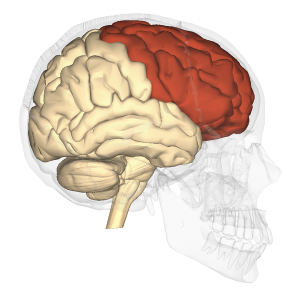
Surprisingly, most of the limbic system is not necessary for ordinary pleasure. When lobotomies are done eliminating the prefrontal cortex, people are able to experience normal pleasure with decreased cognitive skills. Similar states occur in strokes and brain injuries.
Recently, a massive brain injury including damage to hippocampus, amygdala, prefrontal orbitofrontal and ventromedial regions, insula and cingulate still allowed normal feelings for family with subjective feelings of happiness for family and activities. This person, also, had fearfulness. Other damaged children with no cortex and forebrain still have positive pleasure for family, caregivers, toys and music.
These situations show that the cortex is not necessary for ordinary pleasure. Despite this, some of the hotspots are in the cortex, as well.
Multiple Different Hot Spots to Increase or Decrease Pleasure
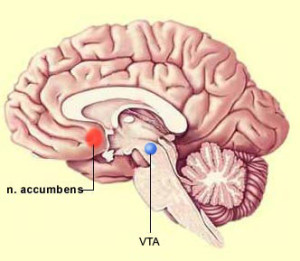
In rats relatively large hubs are the size of a millimeter (possibly a centimeter in humans). Hotspots are one part of larger brain centers. An example is the nucleus accumbens, a center for addictive pleasure, where one tenth of the size is the hotspot to increase or decrease pleasure for opiods. If this hotspot is stimulated, then the pleasure of sugar is greatly enhanced, as is the pleasure of drugs. There is, also, a cold spot that stops pleasure in several drugs tested including opiods and cannabinoids.
Another hot spot occurs in the VP, which is triggered by neurons from the nucleus accumbens. It is the same size and is only part of the larger center. Also, this includes a cold spot. Both of these hot and cold spots in the VP and the NAc are connected and can influence each other further increasing the pleasure to great heights.
 Hot spots have been found in the cortex both in the OFC and the insula. These might be most related to foods in humans.
Hot spots have been found in the cortex both in the OFC and the insula. These might be most related to foods in humans.
There is another hotspot in the dorsal pons of the brainstem (parabrachial nucleus), which is surprising to some because it is not a higher center but does appear to be related to pleasure of food as well as pain. It is, also, connected to general pleasure emotions.
In each hot spot, there are different neurotransmitters involved that determine whether the effect is hot or cold. They, also, determine desire and motivation differently. Research shows that these particular chemicals stimulate pleasure or the opposite only in that region and the same chemicals in another region will not.
What is strange is that the nucleus accumbens and PFC hot spots do not dampen ordinary pleasure if damaged or eliminated. Both can greatly increase pleasure.
 The VP is different from the NAc and does affect ordinary feelings when damaged. This may be a more critical site (at least for taste). Previous research implied hypothalamus damage produces food disgust, but this is really the VP. Damage to VP causes disgust.
The VP is different from the NAc and does affect ordinary feelings when damaged. This may be a more critical site (at least for taste). Previous research implied hypothalamus damage produces food disgust, but this is really the VP. Damage to VP causes disgust.
A conclusion of this invasive animal research is that the nucleus accumbens has multiple different smaller hubs with different effects and the VP has one large one that is critical and without it produces disgust.
Switch Between Desire and Fear
In the nucleus accumbens there are a variety of other modules that impact many more emotions than pleasure and disgust. These various emotions are organized like a keyboard with a wide variety of centers that trigger various emotions. One area is mostly positive emotions and motivations. Another region has an array of mostly negative emotions and reactions. The amygdala is well known to, also influence an array of different emotions including fear, which makes animals freeze. The nucleus accumbens fear reactions are more active with frantic attempts to defend.
These different keys on the NAc emotion keyboard produce a variety of pleasurable and fearful responses. Stimulating multiple different keys triggers of a variety of more complex combined emotions, with varying degrees of intensity.
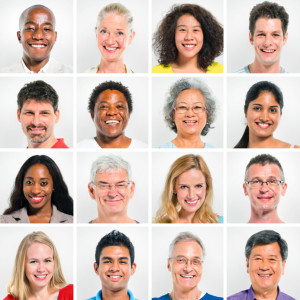
Another factor is that these keys inhibit other sources of fear and pleasure, so complex feedback loops are, also, involved that are not fully understood.
Another confounding factor in the keyboard of emotions in the NAc is that it can be greatly influenced by other brain regions and hotspots, which can be triggered by environment and social responses. Many of the neurotransmitters are retuned and modified by these other regions. In fact, these influences can flip the emotion from desire to fear and dread and back.
Research shows in mice, for example, that bright and loud environments can cause the desire to decrease and the emotion switched to dread. Quiet home like environments, make the desire zones enlarge and the fear shrink.
Certainly, in human environments similar adjustments of the emotional keyboard can take place. PTSD might permanently shift the keys to fear. Addiction retunes to desire and reward. What is interesting for the future is that a variety of neurotransmitters are involved in all of this and future medications might be influential if they can be spatially targeted enough to hit individual keys. There are many different circuits between the NAc and the VP and other centers that are influential in these processes.
The top-down effects of the keyboard tuning come from the pre frontal cortex and limbic regions. These can increase the strength of the various keys or counteract them. Another set of complex neurotransmitters are involved in these circuits.
Dopamine Not Tied to Pleasure But Motivation
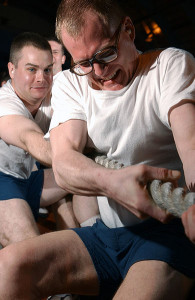 This new research has shown that several regions that were once considered vital in the pleasure pathways are not. One is the overly cited dopamine system in the mesolimbic system. Most of the previous work using electrodes in the human brain are no longer relevant. These caused increased motivation to get a reward, but not actual pleasure. They produced desire or wanting, but not liking.
This new research has shown that several regions that were once considered vital in the pleasure pathways are not. One is the overly cited dopamine system in the mesolimbic system. Most of the previous work using electrodes in the human brain are no longer relevant. These caused increased motivation to get a reward, but not actual pleasure. They produced desire or wanting, but not liking.
Dopamine is the most famous pleasure stimulus in the popular literature. These dopamine neurons start in the VT and go to the NAc or other parts of the striatum and the amygdala. They are important in reward and addictions. But, they do not by themselves produce pleasure. Pleasure is not based on the levels of dopamine. Decreased dopamine doesn’t necessarily reduce pleasure. Even without dopamine regions, rats have pleasure. Parkinson’s patients have pleasure with less dopamine. Decreased dopamine doesn’t stop pleasure of cocaine, while it does stop desire. Even in depression, sensory pleasure can remain, while desire and motivation decrease.
 Dopamine increases desire and wanting, but not pleasure and liking. Wanting and desire without pleasure and liking include compulsive behaviors like gambling and excessive shopping or medications. Motivation targets very particular behaviors possibly through particular dopamine circuits. It is not clear why one or another compulsive behavior is favored. These may be determined at higher levels in the cortex and limbic system.
Dopamine increases desire and wanting, but not pleasure and liking. Wanting and desire without pleasure and liking include compulsive behaviors like gambling and excessive shopping or medications. Motivation targets very particular behaviors possibly through particular dopamine circuits. It is not clear why one or another compulsive behavior is favored. These may be determined at higher levels in the cortex and limbic system.
Cocaine
There is still a question as to why dopamine increasing drugs like amphetamine and cocaine are pleasurable. They do greatly increase motivation and desire, which may be misinterpreted as pleasure in higher centers, where specific events people can be seen as pleasurable in cognitive centers. This mistaken valuation may be the source of pseudo-pleasure of cocaine.
But, it may, also, be that cocaine triggers other events such as natural opiods and GABA that cause the pleasure hotspots to fire.
Pleasure Electrodes
In early experiments with electrodes in human brains “pleasure centers” were described where people and rats would constantly want to push the level stimulating the center. These were hypothalamus and other mesolimbic regions. Later research by the same people did not find that pleasure was produced rather than intense wanting.
A review of all previous electrode experiments in humans in the past and the current deep brain stimulation finds little pleasure as a response. It does find an increase in wanting to do various behaviors even to the extreme of constantly pressing a lever for more stimulation. Some of the electrodes did reduce negative feelings including pain and depression. If reward includes pleasure, desire and learning, deep brain stimulation appears to stimulate only one or two of these parts, mostly motivation. Also, the wanting can flip to negative feelings of anxiety and fear. Many aspects of desire involve fear and other negative components (e.g. hungry and thirsty).
It appears that the effects of motivation are not mixed pleasure and fear, but can flip between these two. However, the experience of a changing motivation can lead to a general feeling of ambiguity. Examples are roller coasters and horror movies.
Pleasure Circuits in the Brain
Current research is finding surprising conclusions about the brain circuits related to pleasure, liking, desire, and learning. Each component can be separated in the brain circuits. Intense desire and even reward do not necessarily produce pleasure.
Very specific hubs in different parts of the brain magnify or decrease pleasure responses or the opposite—fear, dread and disgust. In fact, these can rapidly switch. The nucleus accumbens is much more complex than previously considered. It triggers not only liking, desire and rewards, but, also, fear and disgust. It is not simply a center of addiction, but a keyboard triggering a wide array of emotions at many levels of intensity. The higher cortical centers are very involved in high-level pleasure and the evaluation of all pleasure, but the relation to these hot spots is very complex and is not yet clear.
In the future, hopefully, we will learn about the higher order types of pleasure related to compassion and charity.
